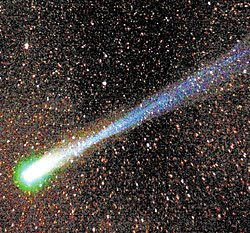Binaculars Astronomy: If you can't afford a telescope, binoculars will do for star-gazing
If you have never experienced binocular astronomy, you'll be thrilled at how easy objects are to locate and the speed and comfort at which you can observe. A whole new experience is waiting for you. Binoculars have a wide field of view and provide right-side-up images, making objects easy to find. They require no effort or expertise to set up ? just sling them around your neck, step outside, and you're ready to go.
They can reveal craters on the Moon, moons orbiting Jupiter, Milky Way star fields, and even other galaxies.
But, before you purchase binoculars, you'll need to understand a few basics. Aperture is the most important binocular specification that describes the diameter of the front lenses. The larger the diameter, the brighter the resulting images. You can find the aperture simply by looking at the two numbers displayed on every binocular: in 10x50, for example, '10' refers to magnification and figure '50' refers to the diameter (in mm) of each of the front lenses (aperture). I suggest you buy binoculars of either 7x35 (for children) or 10x50 (for adults). And one last tip: go for binoculars that have a 'porro' prism design.
you buy binoculars of either 7x35 (for children) or 10x50 (for adults). And one last tip: go for binoculars that have a 'porro' prism design.
In March, there are two planets for you to enjoy during evening hours: Saturn (in Leo) is in the eastern sky and Venus (in Pisces) is low in the west. On 10 March, don't forget to observe the pairing of the ringed planet Saturn with the gibbous Moon.
Regarding constellations, you could enjoy the stars of the "Winter Hexagon" which will be located just overhead during the evening. Direct your binoculars towards the belt of Orion the Hunter and you will be thrilled to see the brilliant emission nebula (M-42) also known as the Orion Nebula. Also enjoy the Great Saptarshi (Ursha Major) in the north-eastern sky. Try to find the Dhruba Tara (Polar Star) with the help of the 'pointers' of the Saptarshi. While looking at stars, pay attention to their colour, as it gives us a clue about their age. For example, in the Orion Constellation, identify an orange-red star just to the north of the Hunter's belt. This is Betelguese, a red-giant that has already used up its hydrogen fuel and may explode anytime into a supernova! Hopefully we'll be lucky enough to see this event in our lifetimes.
And finally, we have the Spring Equinox that falls on 20 March when the Sun crosses the celestial equator (at 5:29 PM) from south to north, signalling the arrival of spring.
Mercury is rising only minutes before the Sun; it's at superior conjunction (almost directly behind the Sun) on 31 March. We're very unlikely to see this elusive little planet this month.
Venus is well up in the western sky at sunset, but will be at inferior conjunction (almost directly in front of the Sun) on 27 March. At the very end of the month it is just starting to appear in the morning sky.
Mars is still rising only a few minutes before sunrise. We won't be getting good views of the red planet until after the summer.
Jupiter, like Mars, rises less than an hour before the Sun. Towards the end of March, we could see Jupiter very low in the south-east just before sunrise.
Saturn is very well placed for viewing this month. It's at opposition to the Sun on 8 March, so it is rising as the Sun sets. It's due south at midnight and doesn't set until sunrise.
In early March, don't miss seeing the surprise Comet Lulin (pictured) with binoculars during the evening hours. Look towards the constellation of Leo, close to the Star Regulus. Wish you all a happy stargazing.(This is the article publish in Nepali Times on March 6 by Kedar Badu,who is the President of Galileo Astronomical Society of POkhara,GASPO-Nepal;for more log on to http://www.nepalitimes.com.np/issue/2009/03/11/StarGazing/15742 )



Comments
Post a Comment